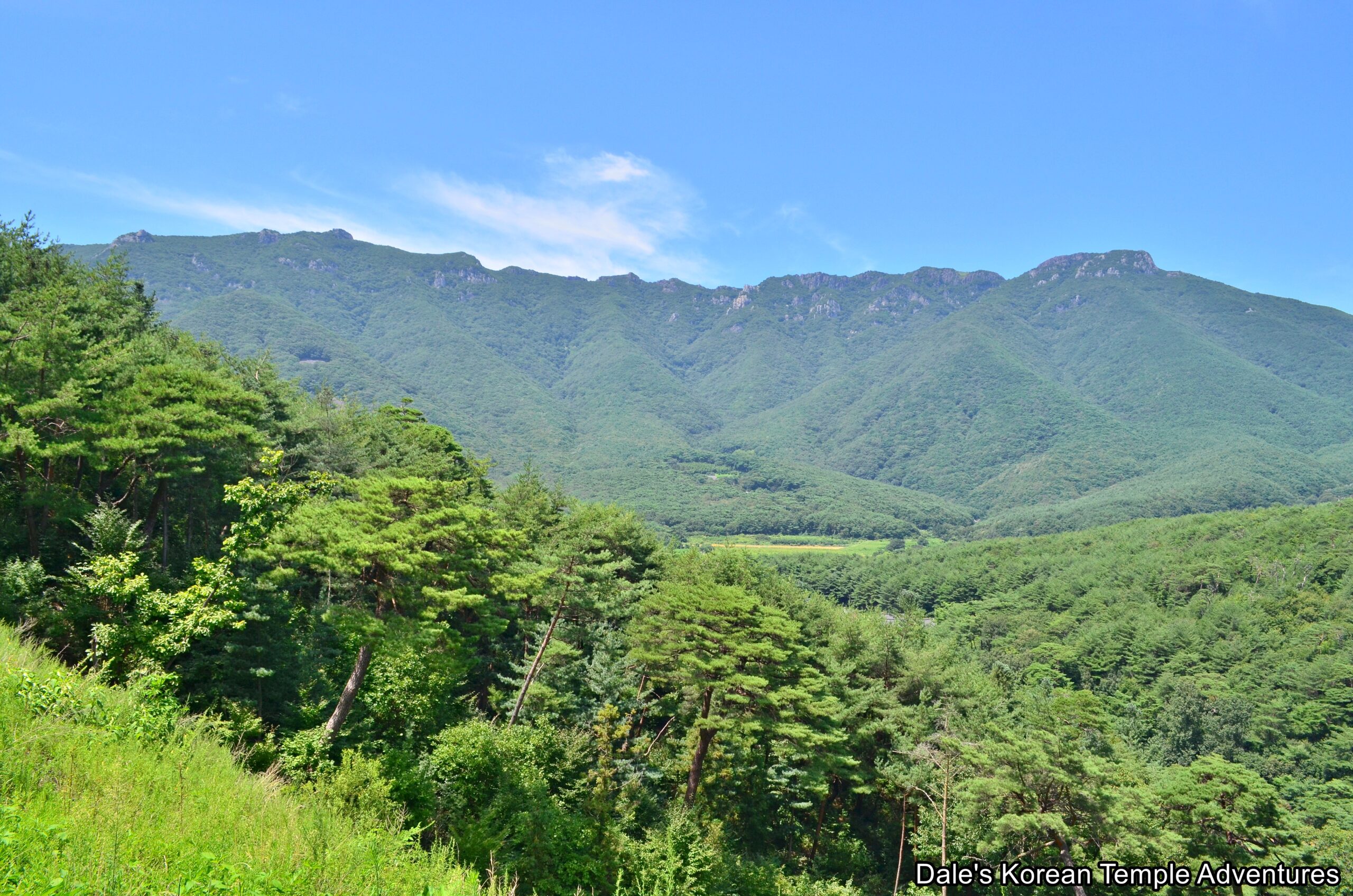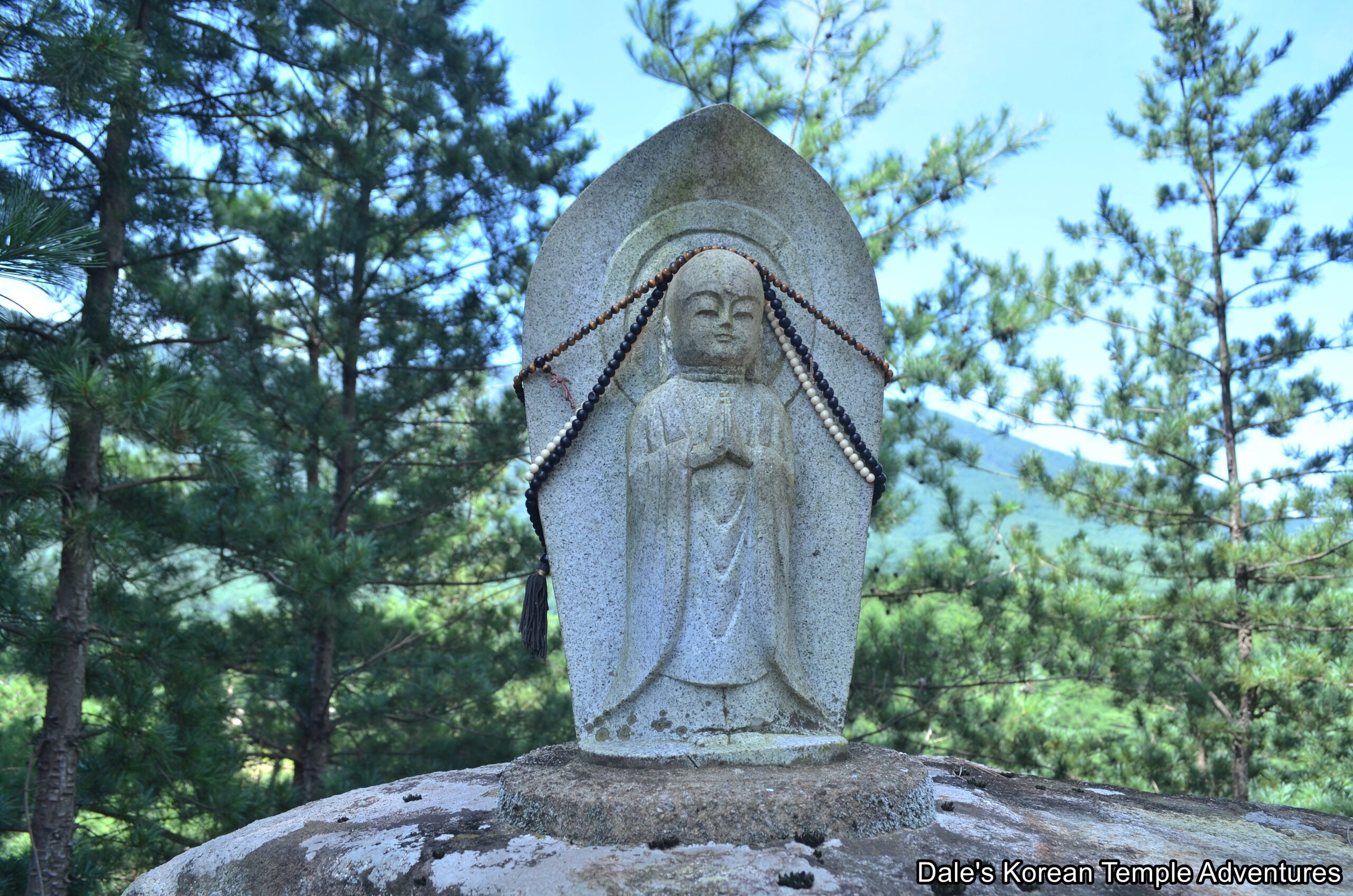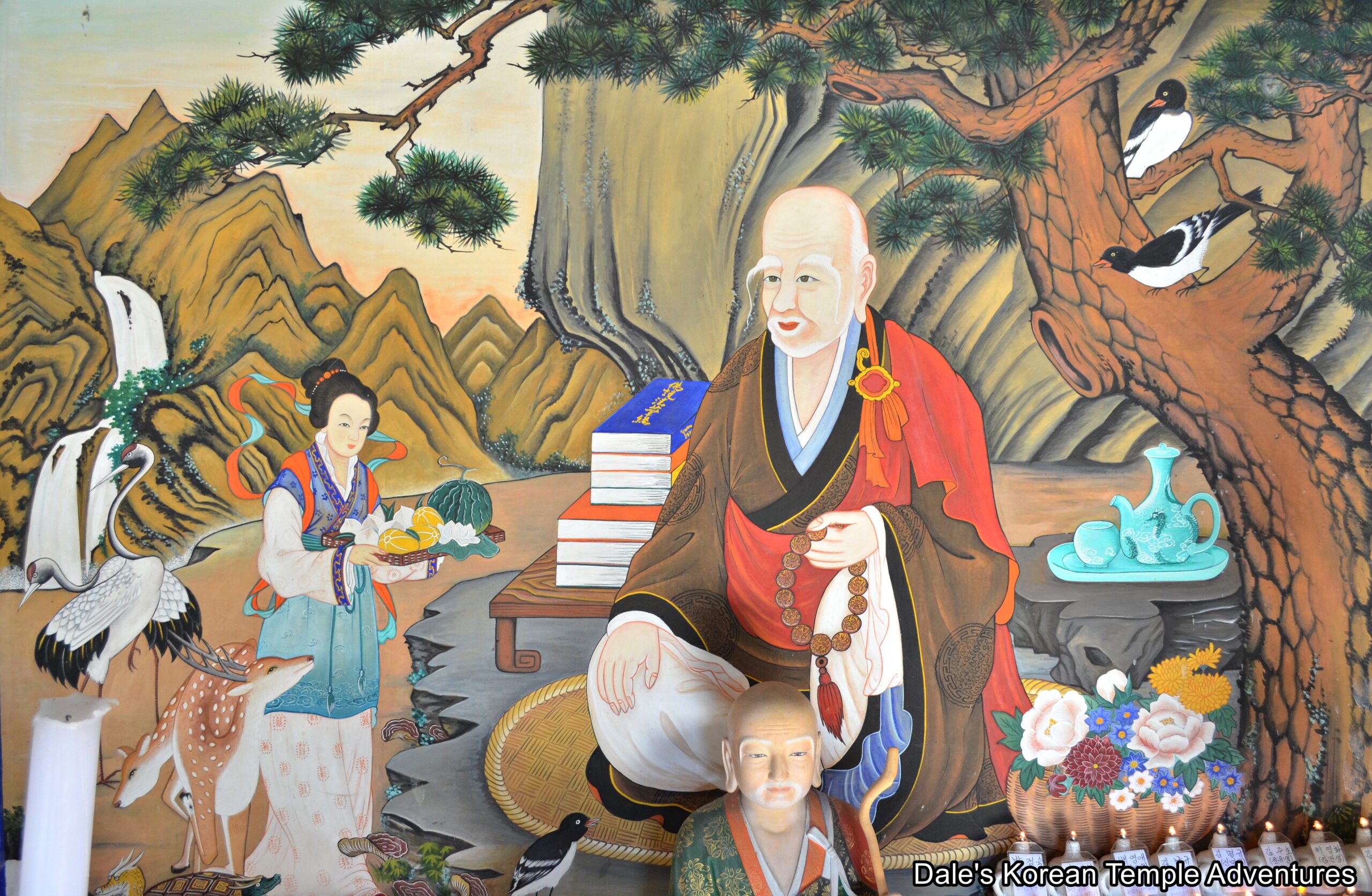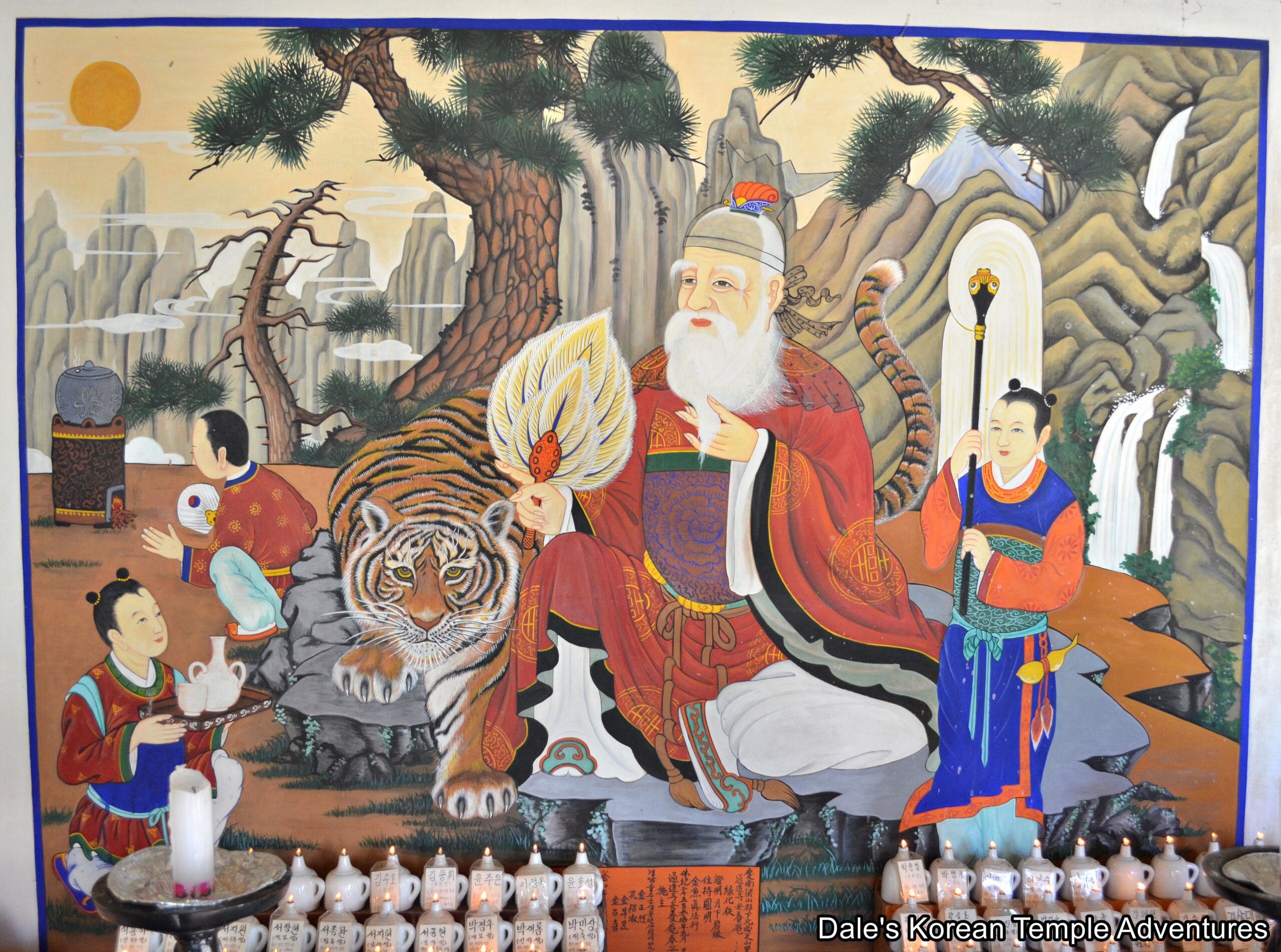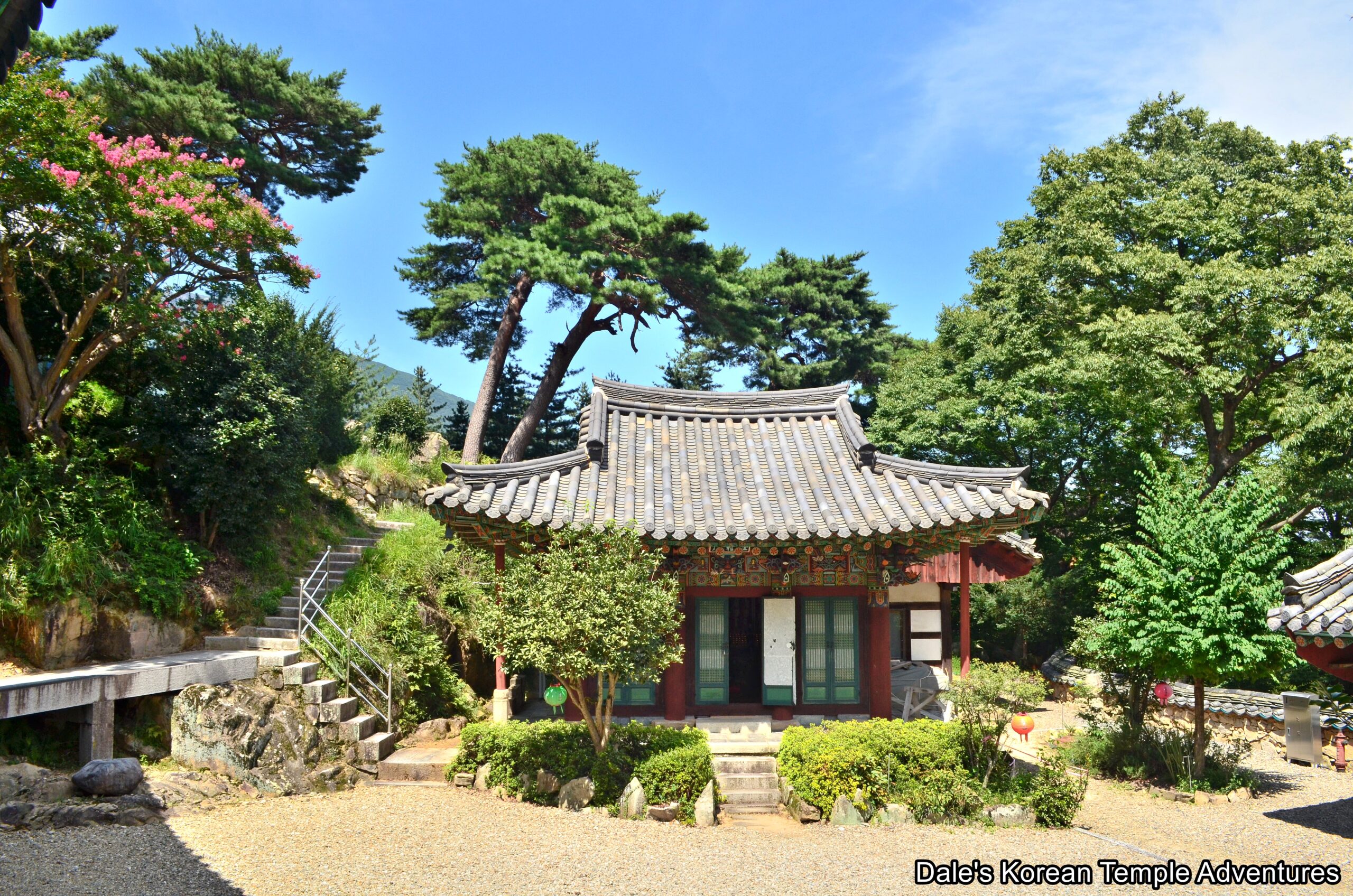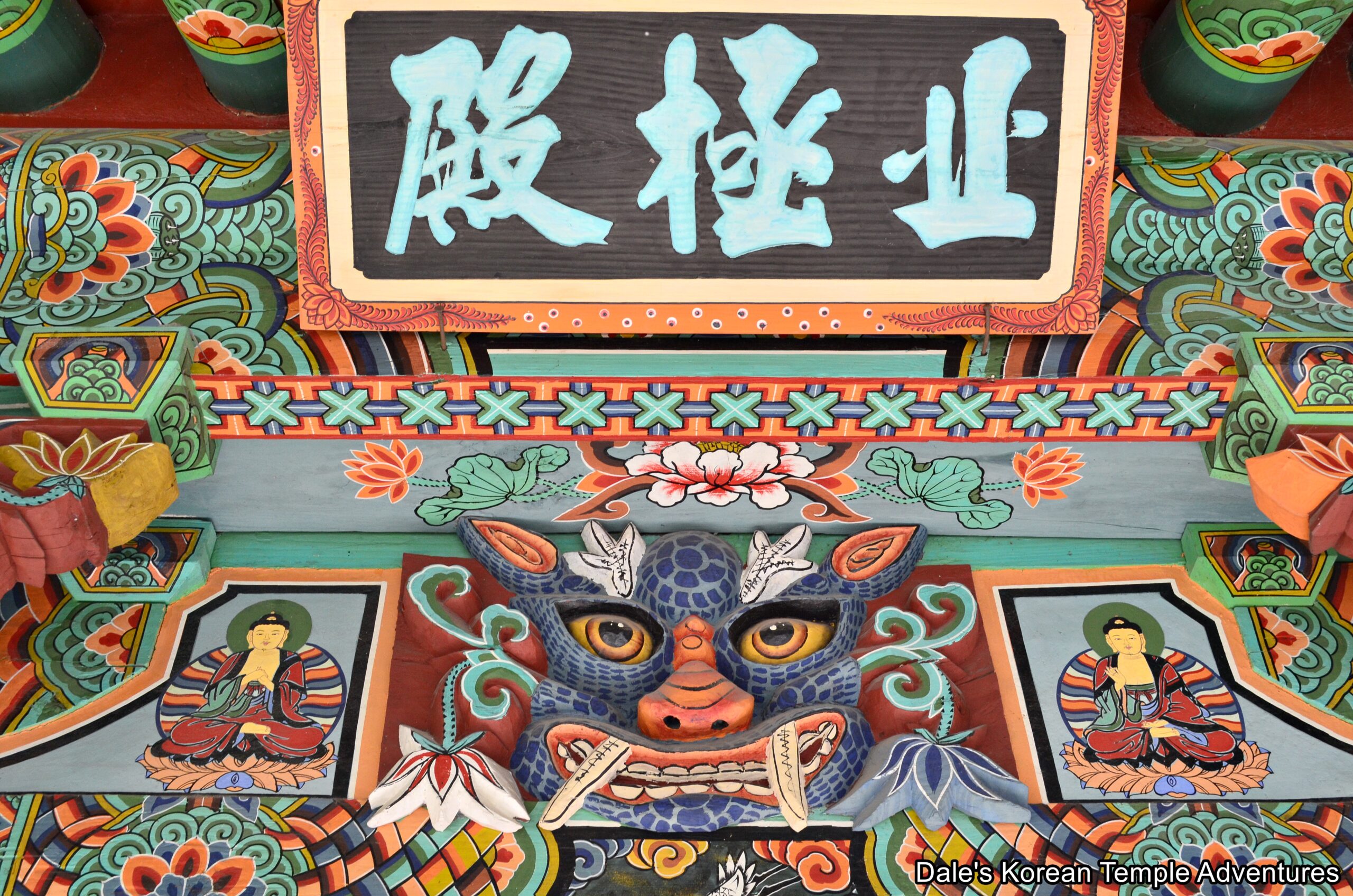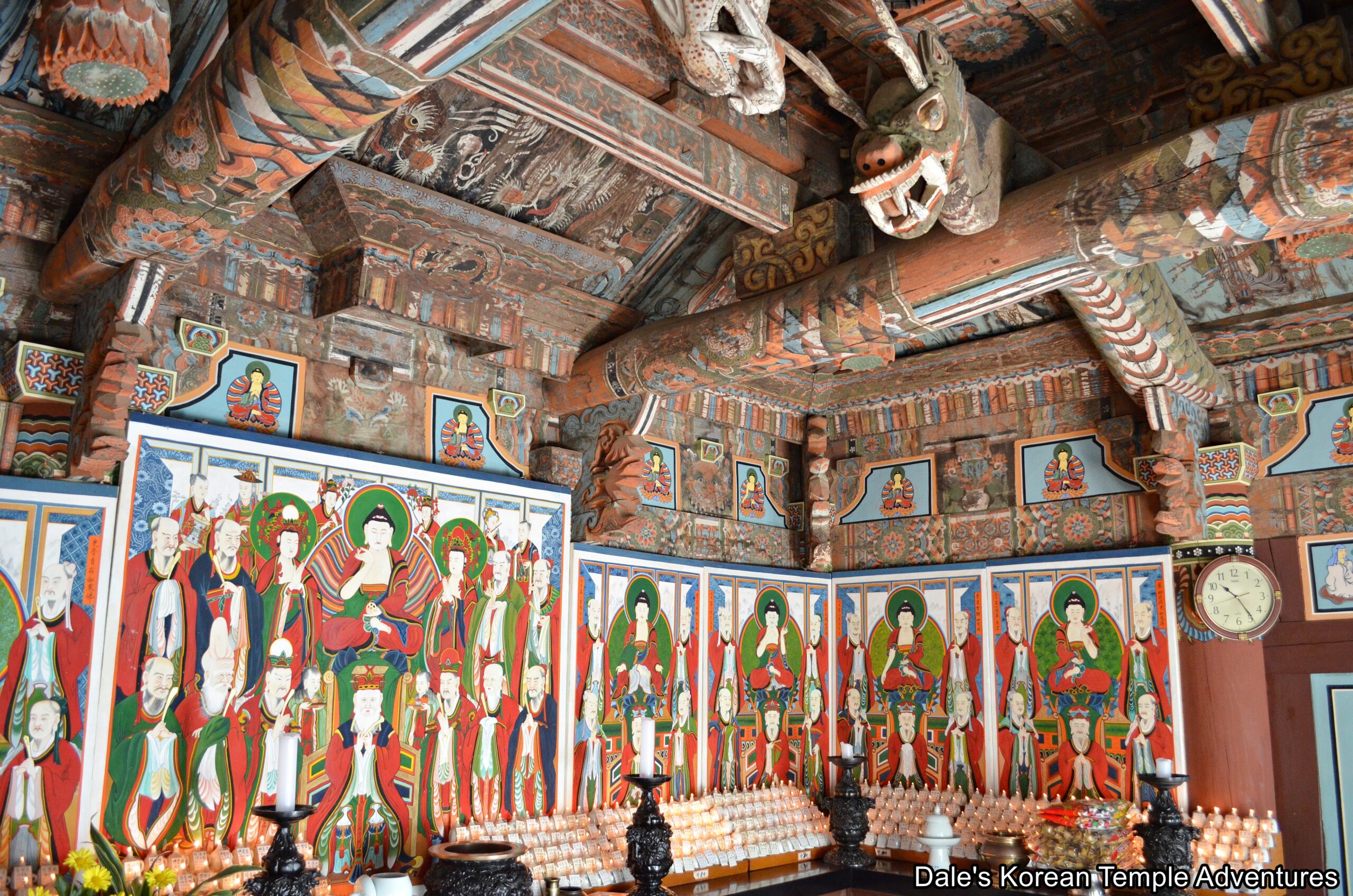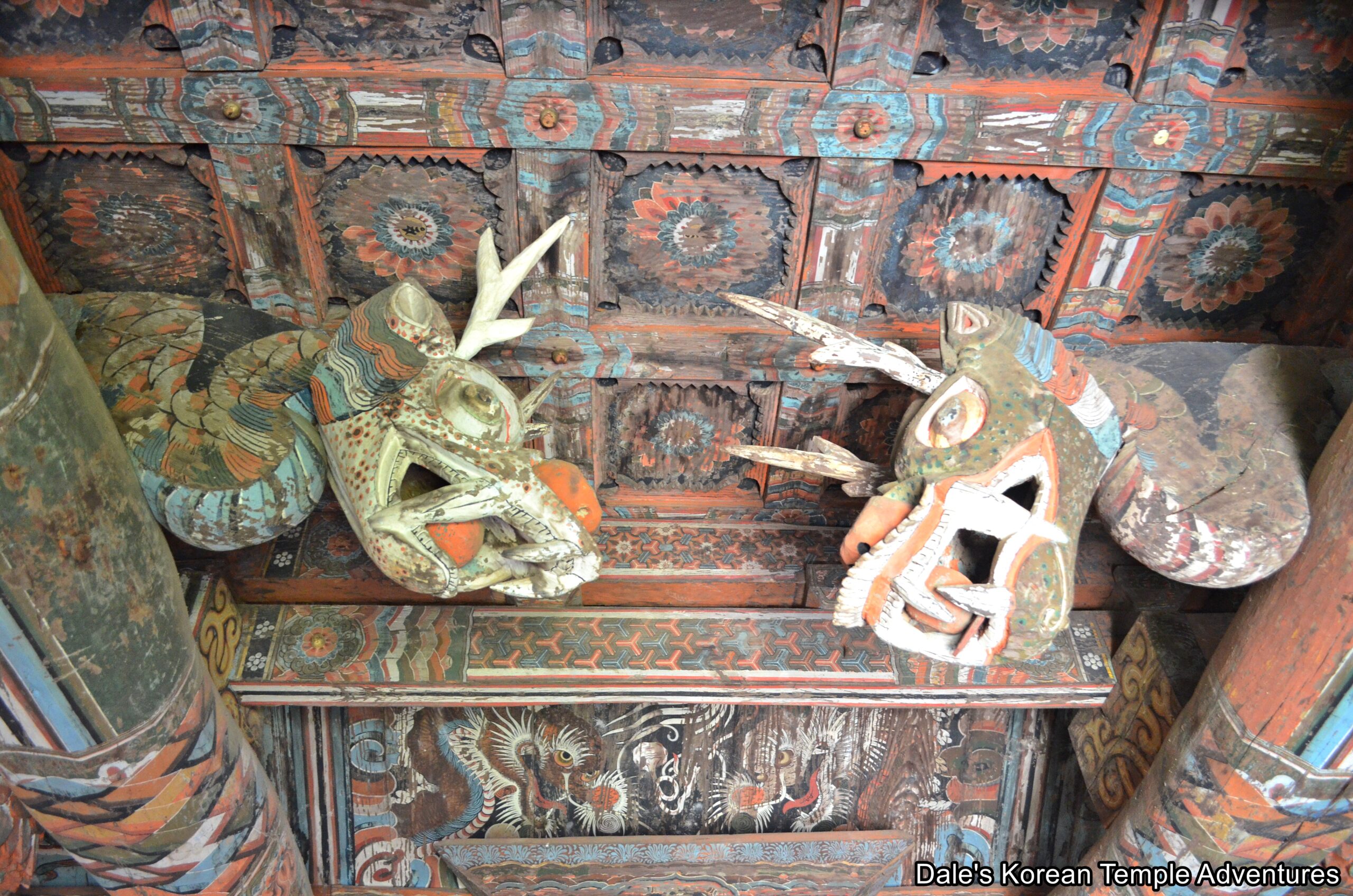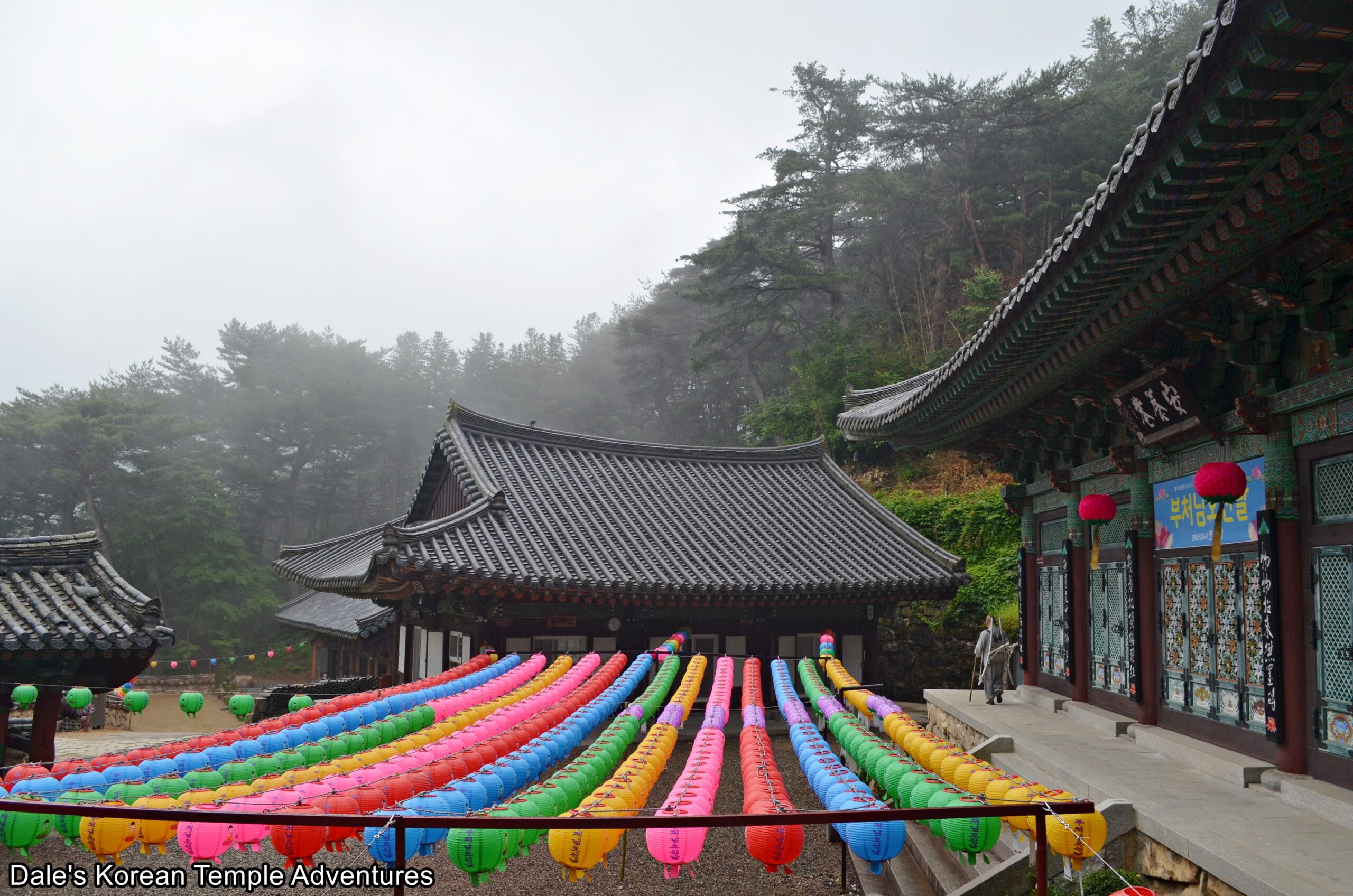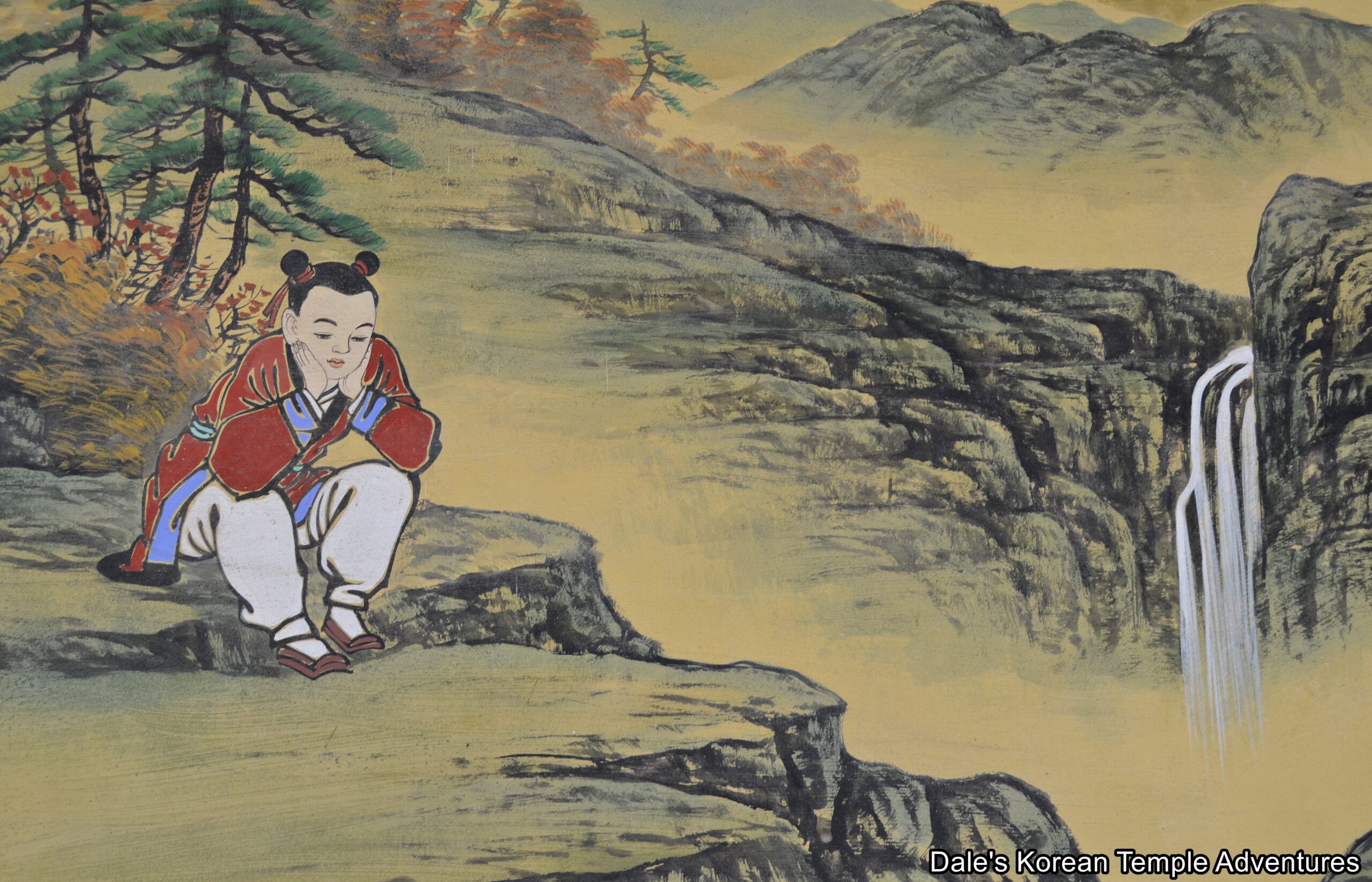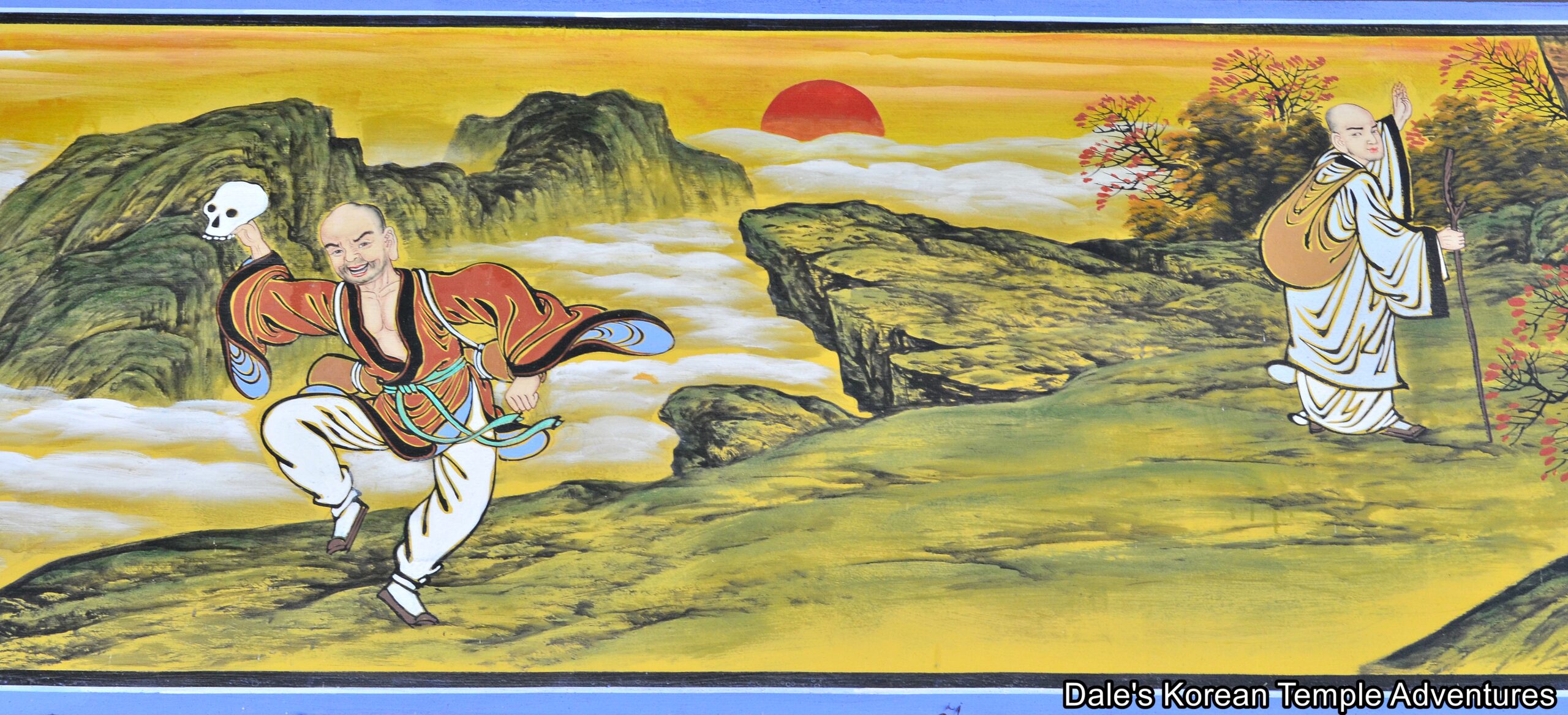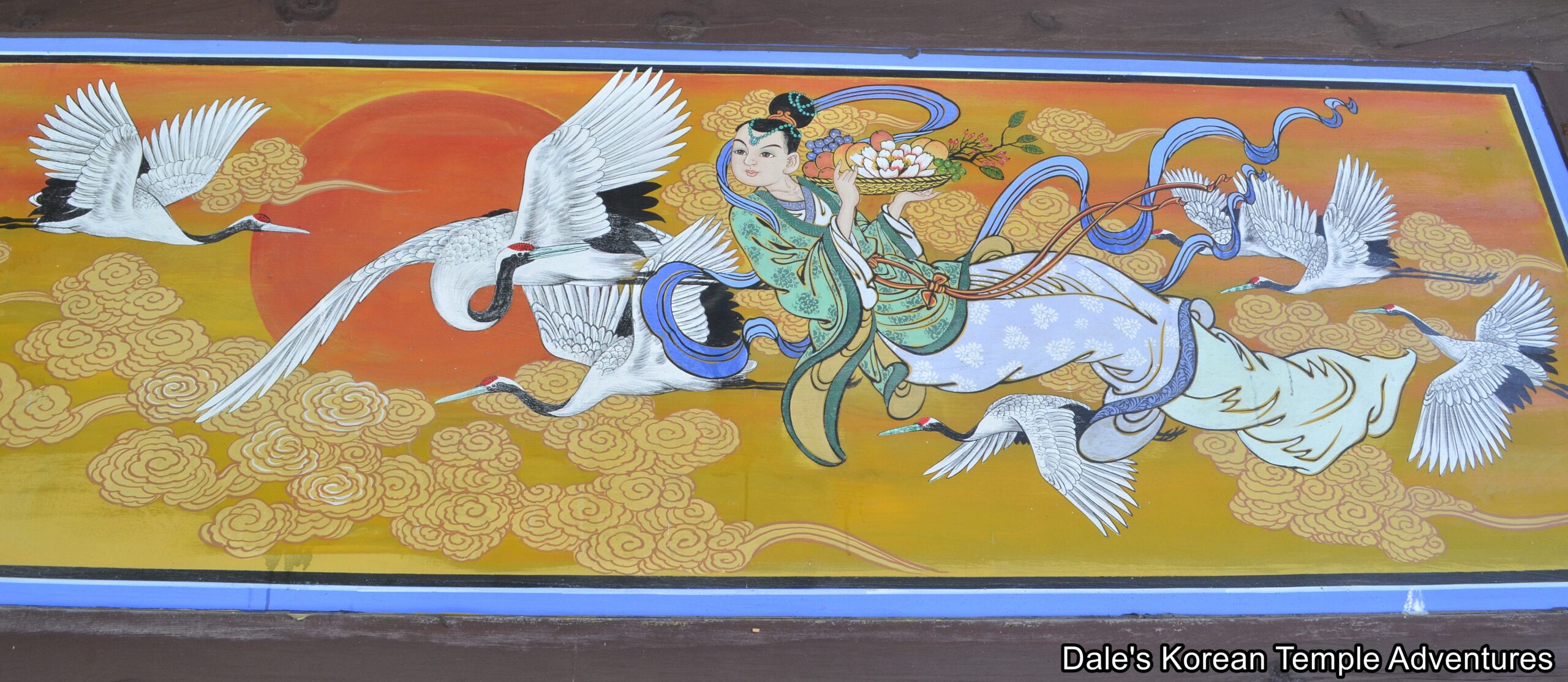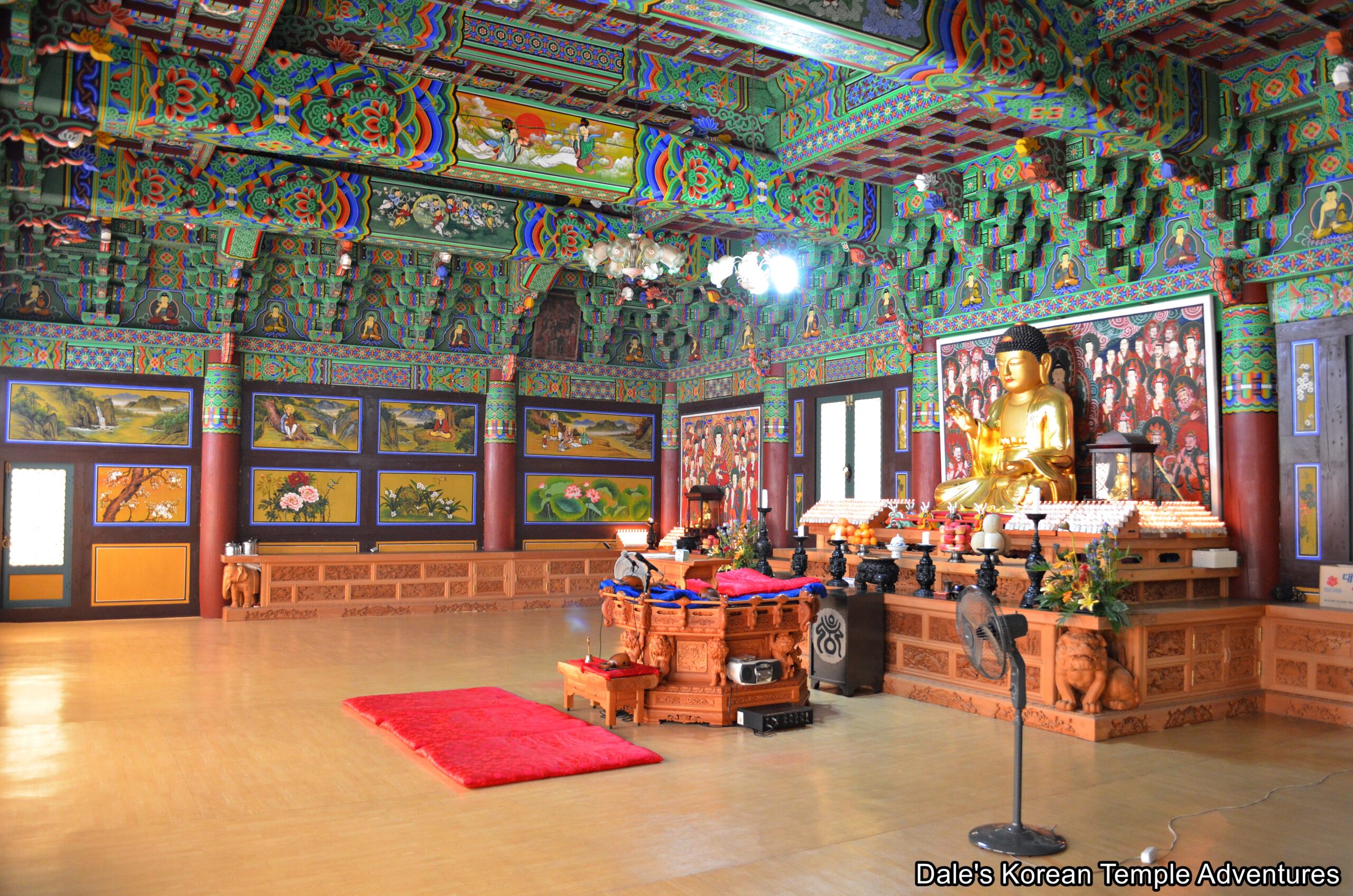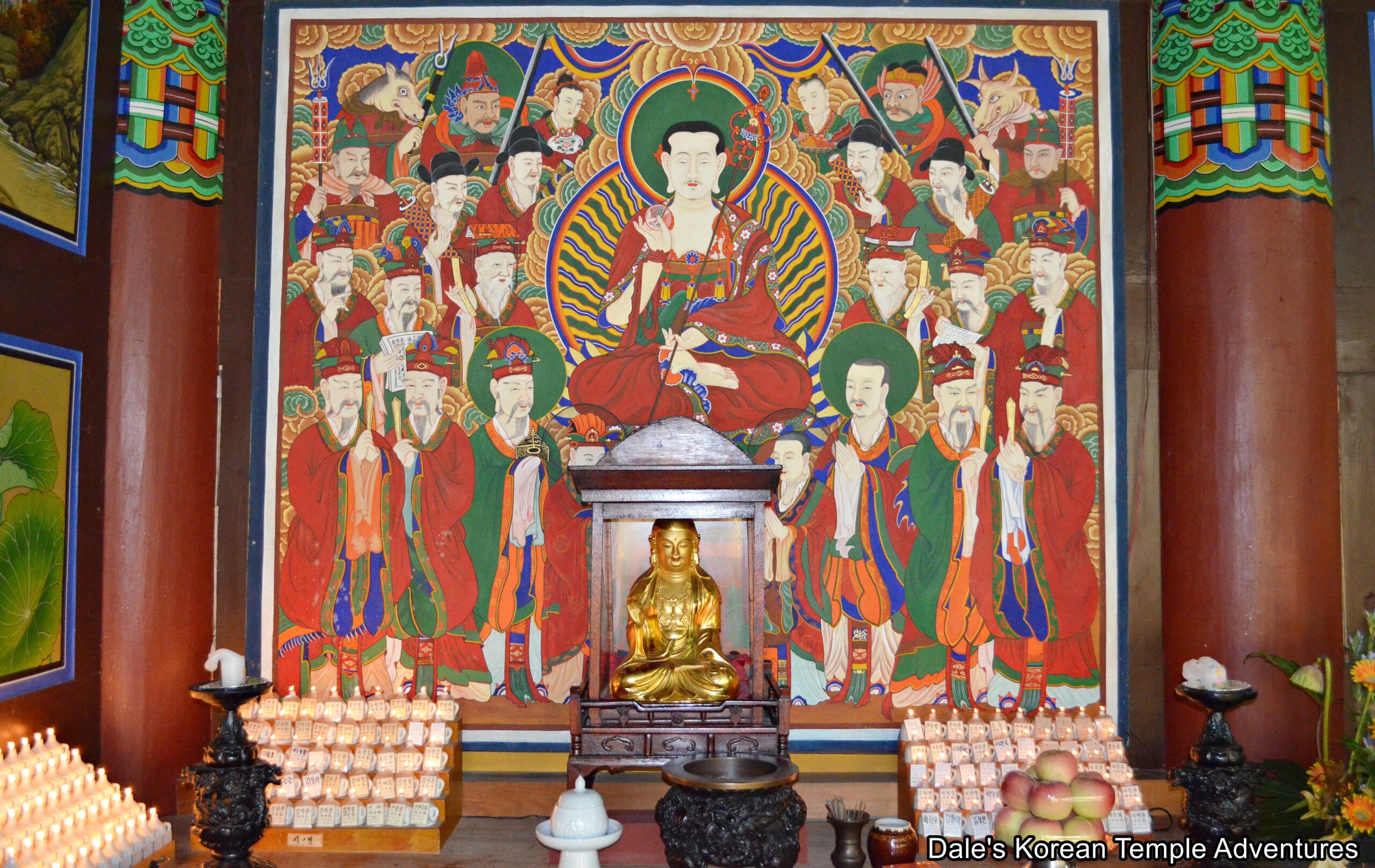Anyangam Hermitage – 안양암 (Yangsan, Gyeongsangnam-do)
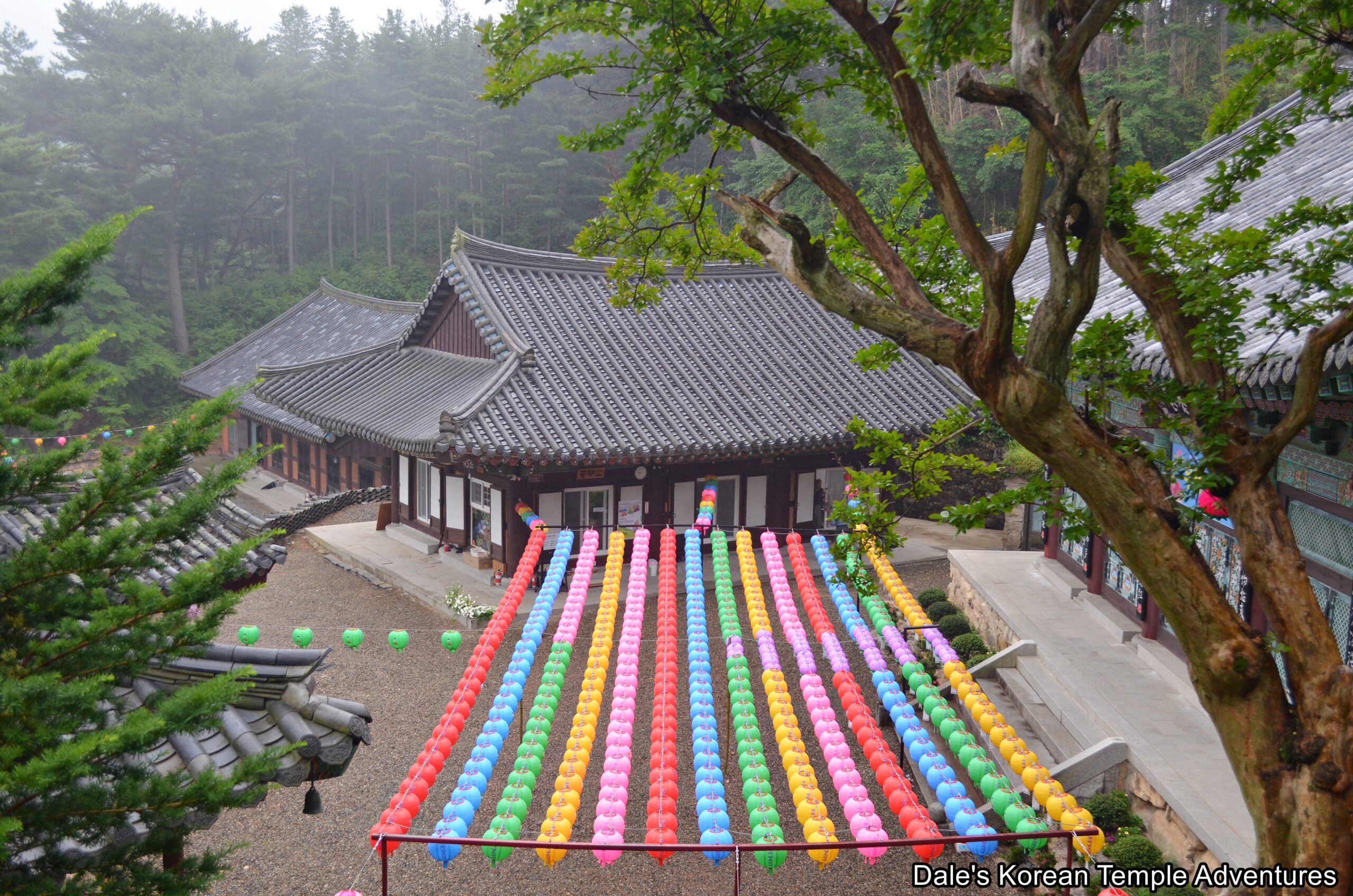
Hermitage History
Anyangam Hermitage is located on the Tongdosa Temple grounds in Yangsan, Gyeongsangnam-do. The name of the hermitage means “Peace Bright Hermitage” in English. It’s unknown as to when the hermitage was first built, but it was repaired in 1295 by the monk Chanin. Anyangam Hermitage was later repaired in 1865, as well. The view that Anyangam Hermitage enjoys of Mt. Yeongchuksan (1,081 m) to the north and Tongdosa Temple to the east is designated as one of the eight most scenic sights on the Tongdosa Temple grounds.
Anyangam Hermitage is home to two Gyeongsangnam-do Tangible Cultural Properties. The first is the Shinjung Taenghwa (Guardian Mural) that dates back to 1861, while the other is the Bukgeuk-jeon Hall that dates back to the late Joseon Dynasty (1392-1910).
Hermitage Layout
You first approach Anyangam Hermitage from the temple parking lot along a beautiful, scenic trail that looks out towards Mt. Yeongchuksan. The views from here are absolutely stunning. Before making your way down the stairs that lead towards the Geukrak-jeon Hall, have a look to your right. To your right you’ll find the Sanshin/Dokseong-gak Hall. The exterior walls to this shaman shrine hall are adorned in traditional dancheong colours. There are two signboards above the two front entrances. The right signboard is for Dokseong (The Lonely Saint), while the left signboard is for Sanshin (The Mountain Spirit). Stepping inside the shaman shrine hall, you’ll find two paintings on the main altar. Both are modern depictions of the two shaman deities. While the mural dedicated to Sanshin has a prowling tiger next to the Mountain Spirit, a pair of magpies are perched on a red pine tree next to the head of Dokseong.
Making your way down the stairs, you’ll notice a pair of shrine halls in this area. The smaller one to your left is the Bukgeuk-jeon Hall, while the larger one straight ahead of you is the Geukrak-jeon Hall. Originally, the hermitage was nothing more than the Bukgeuk-jeon Hall, which means “North Pole Hall” in English. Another more common name for the Bukgeuk-jeon Hall at other temples and hermitages is the Chilseong-gak Hall, which is dedicated to the worship of Chilseong (The Seven Stars). Traditionally, the belief in Chilseong, which was adopted by Korean Buddhism, was first found in Chinese Taoism. The belief in Korea in Chilseong is related to longevity and extending one’s life. As for the Bukgeuk-jeon Hall at Anyangam Hermitage, it is quite small is size. The exterior walls to the Bukgeuk-jeon Hall are adorned with traditional dancheong colours. And hanging above the entry to the shaman shrine hall is a fierce, blue wood relief of a Gwimyeon (Monster Mask). Stepping inside the Bukgeuk-jeon Hall, you’ll realize that the entire interior is filled with beautiful murals. The main altar is occupied by seven representations of Chilseong. Above the central image that depicts Jeseok (Indra), you’ll find a compact canopy. And above this is beautiful pair of swirling dragons. The ceiling is adorned with images of Bicheon (Flying Heavenly Deities), as well as intricate lotus flower paintings. Also adorning some of the surfaces inside the Bukgeuk-jeon Hall are strangely painted Gwimyeon and newer paintings dedicated to the Bodhidharma and various Bodhisattvas. At the ends of the central beams inside the shrine hall are a pair of older looking wood sculptures of dragons. The interior of this shaman shrine hall is one of the most unique that I’ve seen inside a shaman shrine hall.
Just beyond the Bukgeuk-jeon Hall is the large, new Geukrak-jeon Hall. The exterior walls to the main hall are adorned with a beautiful collection of Buddhist murals that include a set of Palsang-do (The Eight Scenes from the Buddha’s Life Murals), the Shimu-do (The Ox-Herding Murals), Bicheon, Wonhyo-daesa (617-686 A.D.) and Uisang-daesa (625-702 A.D.), as well as the Bodhidharma.
Stepping inside the spacious Geukrak-jeon Hall, you’ll find a large, solitary statue of Amita-bul (The Buddha of the Western Paradise) on the main altar. To the left of the main altar is a painting and statue dedicated to Jijang-bosal (The Bodhisattva of the Afterlife). And hanging on the far right wall is a modern Shinjung Taenghwa (Guardian Mural). Hanging above this large, modern painting is the older Shinjung Taenghwa from 1861 that’s a Gyeongsangnam-do Tangible Cultural Property. Rounding out the interior of the Geukrak-jeon Hall are two sets of paintings. The lower set of paintings are beautiful floral murals, while the upper set of paintings are dedicated to the Sinseon (Taoist Immortals).
To the south of the Geukrak-jeon Hall is the Yosachae (monks’ dorms), as well as the administrative office. It’s also in this area that you’ll find a trail that leads down to Tongdosa Temple.
How To Get There
From Busan, you’ll first need to get to the Nopo subway stop, which is stop #134. From there, go to the intercity bus terminal. From the intercity bus terminal get a bus bound for Tongdosa Temple. The ride should last about 25 minutes. The buses leave every 20 minutes from 6:30 a.m. to 9:00 p.m. From where the bus drops you off at the Tongdosa Temple bus stop, you’ll need to walk an additional 10 minutes to the temple grounds west of the bus stop.
From Tongdosa Temple park lot, you’ll need to continue walking up the road to your left. Follow this road for about a kilometre. Instead of heading straight towards Seounam Hermitage, you’ll need to hang a right. Heading uphill, you’ll first pass by Sudoam Hermitage along this road. Continue up this road until you get to the turn-off for Anyangam Hermitage. The road leading into Anyangam Hermitage winds and turns, but eventually you’ll arrive at the hermitage.
Overall Rating: 5/10
There are a few highlights to this Tongdosa Temple hermitage. The first of which are the views from Anyangam Hermitage out towards Mt. Yeongchuksan. As for shrine halls at Anyangam Hermitage, the Bukgeuk-jeon Hall is a must-see, especially the interior of the shaman shrine hall with various 19th century murals. Another beautiful highlight at Anyangam Hermitage are the murals that surround the interior of the Geukrak-jeon Hall, as well as the 19th century Shinjung Taenghwa housed inside the main hall. Anyangam Hermitage is one of the top five hermitages at Tongdosa Temple.
